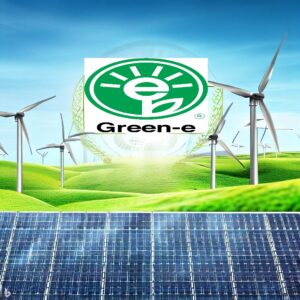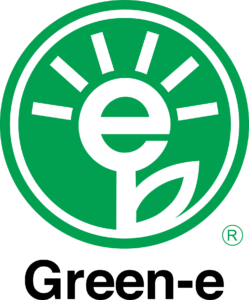Renewable Green Energy
Exploring the Most Affordable Green Commercial Electricity in the US for today's world, sustainability and environmental consciousness have become significant priorities for individuals and businesses alike. As the demand for renewable energy sources continues to rise, finding affordable green electricity options becomes a paramount concern. We aim to uncover the most economical green commercial electricity rates in the United States and shed light on a reliable platform, Bid On Energy, that can assist businesses in comparing green electricity suppliers in energy deregulated states.
WIND GREEN ENERGY OR SOLAR GREEN ENERGY

The Search for Affordable Green Electricity:
When it comes to accessing affordable green commercial electricity, several factors come into play. The cost of renewable energy can vary significantly depending on geographical location, available resources, infrastructure, and state regulations. To pinpoint the areas with the most affordable green electricity rates, we delve into the United States' energy landscape.
Regional Variations in Green Electricity Pricing:
The United States comprises diverse regions with varying renewable energy potential. Let's explore some of the most cost-effective areas for green commercial electricity:
- Midwest States: The Midwest region, known for its extensive wind resources, offers attractive pricing options for green electricity. States like Iowa, Kansas, and Oklahoma have witnessed substantial investments in wind farms, leading to competitive rates for commercial consumers.
- Pacific Northwest: Renowned for its hydroelectric power generation, the Pacific Northwest states, including Washington and Oregon, provide businesses with affordable green electricity alternatives. The abundance of rivers and the presence of hydroelectric dams contribute to cost savings.
- Southwest States: The sunny climate in the Southwest states, such as Arizona, Nevada, and New Mexico, has spurred the growth of solar energy installations. These states boast ample solar resources, resulting in competitive pricing for businesses seeking green electricity options.
Utilizing Bid On Energy for Comparing Green Electricity Suppliers:
To navigate the complexities of the energy market and find the most affordable green electricity rates, businesses in energy deregulated states can turn to Bid On Energy. This user-friendly platform empowers commercial consumers by allowing them to compare various green electricity suppliers. Here's why Bid On Energy is a valuable tool:
Extensive Supplier Network
Bid On Energy provides access to a vast network of green electricity suppliers across energy deregulated states. This allows businesses to explore multiple options and select the most cost-effective solution for their sustainability goals.
Transparent Pricing
Bid On Energy facilitates transparent pricing comparisons, ensuring businesses have accurate information on rates, contracts, and terms offered by different suppliers. This transparency enables informed decision-making and cost savings.
Customized Solutions
With Bid On Energy, businesses can customize their search based on specific requirements such as contract duration, renewable energy certifications, and more. This personalized approach ensures a tailored solution that aligns with each business's unique needs.
Today as businesses strive to reduce their environmental footprint and embrace sustainable practices, finding affordable green commercial electricity becomes crucial. By considering regional variations in green electricity pricing and utilizing platforms like Bid On Energy for supplier comparisons, businesses in energy deregulated states can identify the most cost-effective and eco-friendly options. Embracing green energy not only contributes to a greener future but also offers long-term cost savings and enhances corporate social responsibility.
Remember, Bid On Energy serves as an invaluable resource for businesses seeking the cheapest green electricity rates and a smoother transition towards a sustainable future.
What is a Renewable Energy Certificate (REC) ?
A green Renewable Energy Certificate (REC) is a market-based instrument that represents the environmental attributes of renewable energy generation. When renewable energy is produced, it generates two separate products: the physical electricity and the environmental attributes associated with its renewable nature. The REC serves as proof that a unit of electricity was generated from a renewable energy source.
Here's how green REC's work
When a renewable energy facility, such as a wind farm or solar power plant, generates electricity, it can create and sell RECs separately from the actual electricity. These RECs represent the environmental benefits of the renewable energy generation and can be bought and sold on the open market.
When a business or individual purchases RECs, they are effectively supporting renewable energy generation and contributing to the reduction of greenhouse gas emissions. By purchasing and retiring RECs, the buyer is ensuring that the environmental benefits associated with the renewable energy generation are not double-counted or claimed by anyone else.
RECs play a crucial role in promoting renewable energy development by providing a mechanism for businesses and organizations to support and offset their electricity consumption with renewable energy sources, even if they are not physically connected to a renewable energy facility. It allows consumers to claim the environmental benefits associated with renewable energy, even if the physical electricity they consume comes from conventional sources.
It's important to note that RECs are separate from the actual electricity supply. When a consumer purchases RECs, they are supporting the growth of renewable energy but may not directly receive electricity from a specific renewable energy project. However, their purchase contributes to the overall demand for renewable energy and helps drive the transition to a greener and more sustainable energy future.
Today a green Renewable Energy Certificate represents the environmental attributes of renewable energy generation and provides a means for businesses and individuals to support renewable energy development and offset their electricity consumption with clean energy sources.
What is a green-e certificate?
 Green-e is a certification program that sets standards and verifies renewable energy and carbon offset products in North America. It is administered by the Center for Resource Solutions (CRS), an independent nonprofit organization.
Green-e is a certification program that sets standards and verifies renewable energy and carbon offset products in North America. It is administered by the Center for Resource Solutions (CRS), an independent nonprofit organization.
The Green-e certification ensures that renewable energy and carbon offset products meet strict environmental and consumer protection standards. It provides transparency and credibility to buyers, helping them make informed choices and support renewable energy and carbon reduction projects.
The Green-e certification covers two primary areas:
Green-e Energy
Green-e Energy certification applies to renewable energy products, such as electricity generated from renewable sources like wind, solar, hydro, and geothermal. When a product carries the Green-e Energy logo, it means that the electricity meets rigorous environmental and consumer protection standards.
The Green-e Energy program requires the following criteria for certification:
- The renewable energy must be generated from eligible sources.
- The environmental benefits associated with the renewable energy must not be double-counted or sold to multiple customers.
- The product must be properly disclosed to consumers, providing transparent information about its attributes.
Green-e Climate
Green-e Climate certification applies to carbon offset products, which are projects that reduce, capture, or remove greenhouse gas emissions to help mitigate climate change. Green-e Climate verifies that the carbon offset projects meet strict criteria, including additional (the emissions reduction would not have occurred without the project), permanence, and transparency.
The Green-e Climate program requires the following criteria for certification:
- The carbon offset project must demonstrate real, quantifiable emissions reductions or removals.
- The project must adhere to rigorous standards and methodologies.
- The project must accurately calculate and report emissions reductions.
By choosing products certified by Green-e, consumers can trust that their purchase is supporting genuine renewable energy generation or carbon offset projects and making a positive environmental impact. The Green-e logo provides a recognizable symbol of credibility and assurance in the marketplace.
Overall, Green-e plays a vital role in promoting transparency and trust in the renewable energy and carbon offset markets, empowering consumers to support environmentally responsible choices and contribute to a cleaner and more sustainable future.
What are Solar Renewable Energy Credits?
Renewable Solar Energy Credits (SRECs), also known as Solar Renewable Energy Credits or Solar Renewable Energy Certificates, are financial instruments that represent the environmental attributes or benefits associated with the production of solar energy. They are typically generated for every megawatt-hour (MWh) of electricity produced from solar installations.
SRECs are a form of incentive for solar energy producers and serve two main purposes:
 Green Solar Compliance
Green Solar Compliance
In certain states or regions with Renewable Portfolio Standards (RPS) or similar regulations, utilities or electricity suppliers are required to generate or purchase a specific percentage of their electricity from renewable sources. To comply with these standards, utilities can use SRECs as a means of demonstrating that a portion of their electricity supply comes from solar energy. By acquiring SRECs, utilities fulfill their obligations and meet the renewable energy targets set by regulators.
Financial Incentives Green Solar Energy Credits
SRECs have value in the market and can be bought and sold separately from the physical electricity. Commercial entities that install solar energy systems can generate SRECs based on the amount of electricity their system produces. These SRECs can then be sold to utilities, energy suppliers, or other entities that need to meet their renewable energy requirements. The revenue generated from selling SRECs provides an additional stream of income for solar system owners, making solar energy installations more economically attractive.
Here's how commercial entities can use SRECs:
Green Solar Revenue Generation
Commercial entities that invest in solar energy systems can generate SRECs based on their solar energy production. By registering their systems with the appropriate state or regional SREC tracking program, they can create and sell SRECs on the open market. This allows them to earn additional revenue alongside the savings they already receive from using solar energy to offset their electricity consumption.
Green Energy Offsetting Costs
SRECs can help offset the upfront costs or ongoing operational expenses associated with installing and maintaining a solar energy system. The income generated from selling SRECs can be used to recoup the investment or cover maintenance and operational costs, making solar energy more financially viable for commercial entities.
It's important to note that the availability and structure of SREC markets can vary by state or region. Some areas have robust and well-established markets with high demand for SRECs, while others may have limited or emerging markets. Commercial entities should research and understand the specific regulations, market dynamics, and program requirements in their respective locations to effectively participate in the SREC market and maximize the financial benefits of their solar energy systems.
In summary, Renewable Solar Energy Credits (SRECs) represent the environmental attributes associated with solar energy production. Commercial entities can generate and sell SRECs to utilities and energy suppliers to comply with renewable energy standards and generate additional revenue, helping to offset the costs of installing and maintaining solar energy systems.
What are Renewable Wind Energy Credits (WRECs)?
A Renewable Wind Energy Credit (WRECs), also known as Wind Renewable Energy Credits or Wind Renewable Energy Certificates, are financial instruments that represent the environmental benefits associated with wind energy generation. They are typically generated for every megawatt-hour (MWh) of electricity produced from wind power installations.
WRECs serve two primary purposes:
Wind Green Energy Compliance. 
In regions or states with Renewable Portfolio Standards (RPS) or similar regulations, utilities or electricity suppliers are required to generate or purchase a certain percentage of their electricity from renewable sources, including wind energy. By acquiring WRECs, utilities can demonstrate compliance with these renewable energy standards and meet their mandated targets.
Financial Incentives Wind Green Energy Credits.
WRECs hold value in the market and can be bought and sold separately from the physical electricity. Commercial entities that invest in wind energy systems can generate WRECs based on their wind energy production. These WRECs can then be sold to utilities, energy suppliers, or other entities seeking to meet their renewable energy requirements. The revenue from selling WRECs provides an additional income stream for wind system owners, enhancing the economic viability of wind energy installations.
Here's how commercial entities can utilize WRECs:
Wind Revenue Generation
Commercial entities that install wind energy systems can generate WRECs based on the amount of wind energy their system produces. By registering their systems with the appropriate WREC tracking program or certification body, they can create and sell WRECs in the market. This enables them to generate additional revenue alongside the cost savings already obtained from utilizing wind energy to offset their electricity consumption.
Offsetting Energy Costs
WRECs can help offset the upfront investment or ongoing operational expenses associated with installing and maintaining a wind energy system. The income derived from selling WRECs can be used to recoup the initial investment or cover maintenance and operational costs, making wind energy installations more economically favorable for commercial entities.
It's worth noting that the availability and structure of WREC markets can vary by location. Some regions have well-developed and active WREC markets with high demand, while others may have emerging or limited markets. Commercial entities should research and understand the specific regulations, market dynamics, and program requirements in their respective areas to effectively participate in the WREC market and maximize the financial benefits of their wind energy systems.
Today Renewable Wind Energy Credits (WRECs) represent the environmental benefits associated with wind energy generation. Commercial entities can generate and sell WRECs to utilities and energy suppliers to comply with renewable energy standards and generate additional revenue, helping offset the costs of installing and maintaining wind energy systems.
